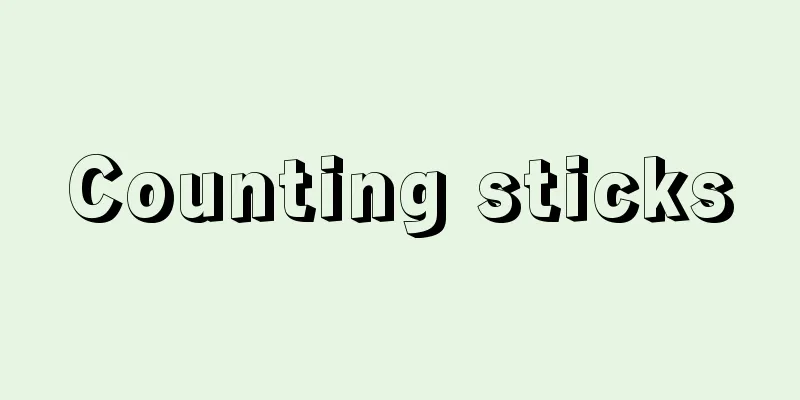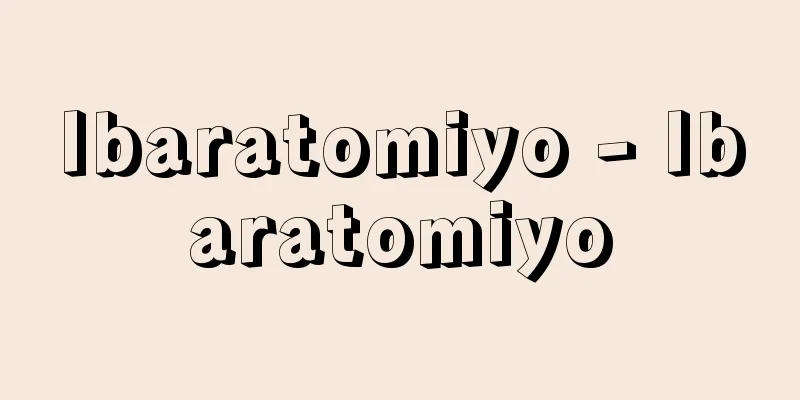Counting sticks

|
〘Noun〙① A tool used to show hexagrams in I Ching. It is made of six wooden pillars about 10cm long, each with four sides that show yin and yang, and thus shows either yang or yin lines. ※Otogi-zoshi, Sasayaki-take ( late Muromachi period) "The bamboo sticks are wrapped around the middle, and the bamboo sticks are wrapped around the 16 pieces, and the 8 pieces of sokusa are used to scatter the sangi."② A calculating tool used in Japanese mathematics, introduced from China. It is a small wooden square stick, with red representing addition and black representing subtraction. These are arranged on a grid-drawn cardboard or wooden board to show numbers, and by changing the arrangement, calculations such as the four arithmetic operations, kaihei, and kairitsu are performed. In China, it is called san, sek, or chu, and from the Song and Yuan dynasties onwards, it was used to solve higher-order equations, and in Japan it was also used for this purpose during the Edo period. Calculation. Sanchu (calculation) . ※Ryōjinhisō (around 1179) 2 "The ten worlds and ten kinds of things are the calculation of the law, and if the mind of the law is awakened, there is not a single person who hears one sentence or one verse who will not become a Buddha ." ③ A thin stick used to hold down boards on a roof. ※Yukiguni (1935-47) by Kawabata Yasunari "The counting sticks and supporting stones on the board-roofed roofs were no different from those in hot spring towns." ④ The name of a crest. A model of ①. It is often painted black to avoid confusion with the Hikiryōmon. [Additional notes] The oldest surviving counting sticks in Japan date back to the Heian period and were brought from China. In the Shuowen Jiezi, it is written that "筭" is "six inches long, so that one can calculate the number of times, from bamboo, and it is said that playing with bamboo is always correct," and it was used for divination as well as calculation. Source: The Selected Edition of the Japanese Language Dictionary About the Selected Edition of the Japanese Language Dictionary Information |
|
〘名〙① 易占で卦(け)を示すために用いる道具。長さ約一〇センチメートルの方柱状の六本の木で、おのおのに陰陽を示す四面があり、それによって陽爻(ようこう)あるいは陰爻(いんこう)を表わす。※御伽草子・ささやき竹(室町末)「なかのり、十六づをくり、八けのそくさをもってさんぎをちらし」② 和算で使われた中国伝来の計算用具。木製の小さな角棒で、赤は加、黒は減を示す。これを方眼を引いた厚紙ないしは木製の盤上に並べて数を表わし、配列を変えることによって四則・開平・開立などの計算を行なう。中国では算・策・籌などと呼ばれ、宋・元時代以降はこれを用いて高次方程式が解かれたが、日本でも江戸時代にはこの目的のために使用された。算。算籌(さんちゅう)。※梁塵秘抄(1179頃)二「十界十如は法算ぎ、法界唯心覚りなば、一文一偈を聞く人の、仏に成らぬは一人なし」③ 屋根を葺(ふ)いた板などをおさえるために打ちつける細長い棒。※雪国(1935‐47)〈川端康成〉「板葺きの屋根の算木や添石も温泉町と変りがなかった」④ 紋所の名。①をかたどったもの。引両紋と混同を避けるために地黒とすることが多い。[補注]日本の現存最古の算木は平安時代のもので、中国からもたらされた。「説文解字」には「筭」に「長六寸、所以計厤数者、从竹弄、言常弄乃不誤也」とあり、計算具であると同時に占いのためにも用いられた。
出典 精選版 日本国語大辞典精選版 日本国語大辞典について 情報 |
<<: House of Councillors - Sangiin
Recommend
Madagascar jasmine
…Madagascar jasmine S. floribunda Brongn. is an e...
Franz I (English spelling)
…However, when Frederick II the Great of Prussia ...
Deutscher Werkbund (English spelling)
…In terms of the image of the city, T. Garnier pr...
two-banded monitor
...The largest living species is the New Guinea m...
Broadcasting Act
This law, number 132 of 1950, stipulates the basi...
Market price issue
When issuing new shares, the issue price is not se...
Shosoin documents
These are ancient documents from the 8th century ...
periphery
...In this intellectual atmosphere, a reexaminati...
Serov
A city in Sverdlovsk Oblast in central-western Rus...
Kikuchi Keigetsu
Japanese painter. Born in Nagano Prefecture. His ...
Buying and Hanging - Buying and Hanging
…There is a stock market proverb that goes, “Wait...
Operating system
A collection of programs designed to process comp...
Chewing tobacco - chewing tobacco
...As we enter an age of international competitio...
Iris Susiana
… Other species have bulbs with enlarged rhizomes...
Burbank - Luther Burbank
American plant breeder. Born in Lancaster, Massac...









![Kaminaka [town] - Kaminaka](/upload/images/67cb3f4589265.webp)